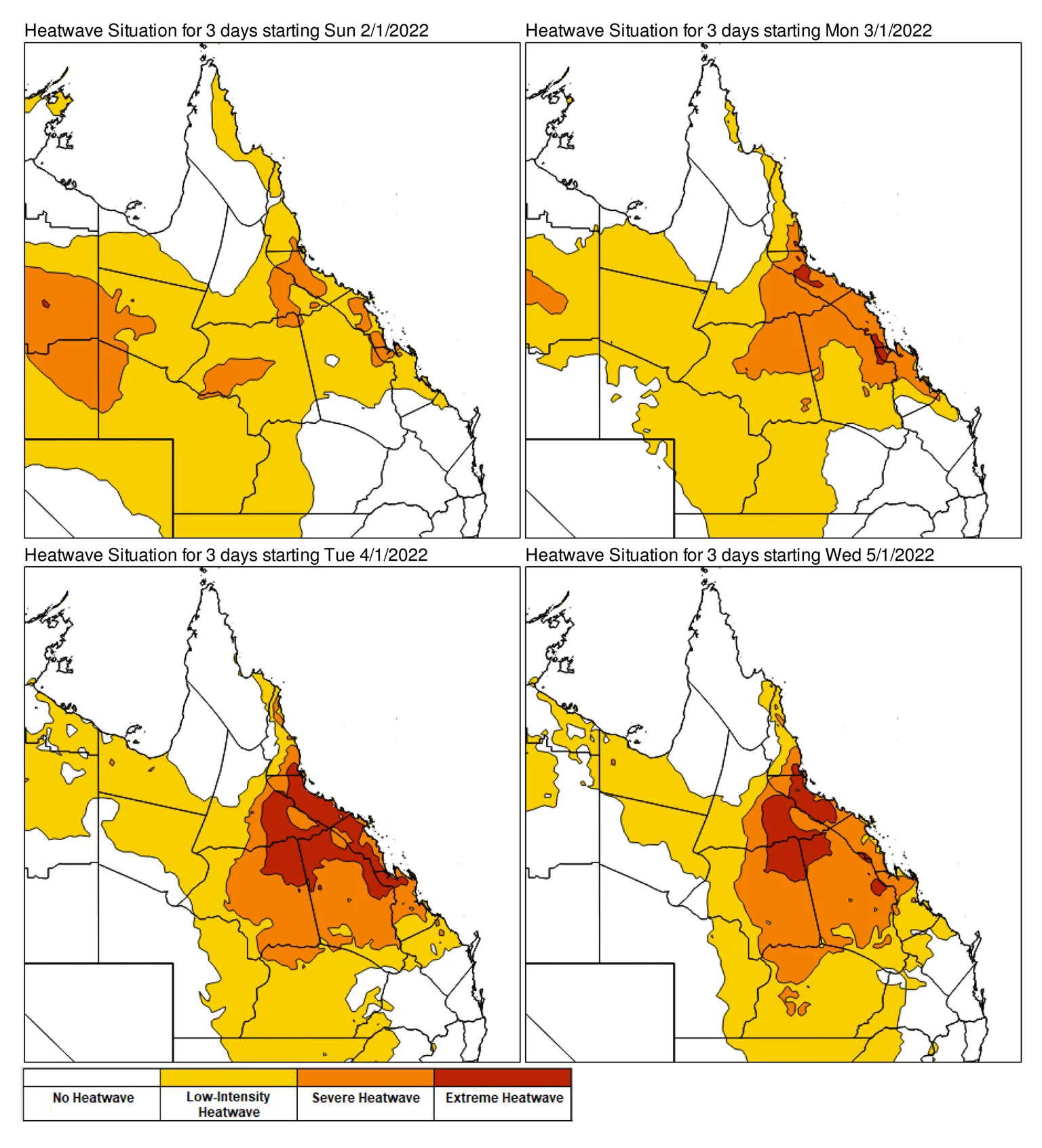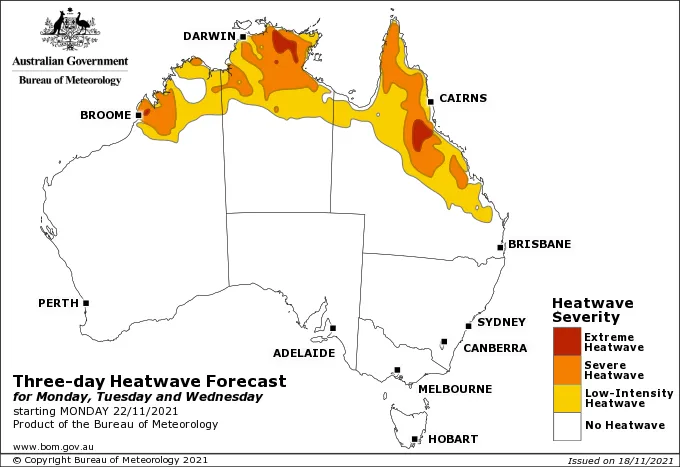How will I know if a heatwave is coming?
10 February 2016
Updated 6 October 2023
In the last 200 years, severe and extreme heatwaves have cost more lives than any other natural hazard in Australia. Heatwaves affect healthcare, transport, emergency services, energy, agriculture and many other sectors. So when is it a heatwave, rather than just hot? And how will you know if one is on the way?
Watch this short video to learn more about heatwaves
What is a heatwave?
The Bureau defines a heatwave as when the maximum and minimum temperatures are unusually hot over 3 days. This is compared to the local climate and past weather.
Cooler nights allow some recovery from each day’s heat, but if the temperature stays high overnight, the next day may heat up more quickly. This can lead to more hours of extreme heat.
In heatwaves, hot nights make it harder to recover from the heat of the day. This puts more stress on the body.
A run of unusually high night and daytime temperatures can:
- lead to heat stress, a critical factor in human health
- affect infrastructure such as public transport and electricity supply.
Types of heatwave
How we classify heatwaves
We use the excess heat factor (EHF) in Australian heatwave monitoring and forecasting. Using this index, we classify heatwaves by intensity.
The EHF combines:
- a comparison of the average temperatures for a 3-day period with what would be considered hot at that location
- the observed temperatures at that location over the past 30 days.
In simple terms, the EHF measures how much of a shock to the body the forecast temperatures will be, compared to the weather over the past month.
The calculation allows for people's ability to adapt to heat. For example, the same temperature feels different to residents of Perth and Hobart. A 35 °C day will feel warmer to people who live in Hobart, as they are used to cooler temperatures.
Heatwave intensity
Heatwaves are classified into 3 types, based on intensity.
- Low-intensity heatwaves are frequent during summer. Most people can cope during these heatwaves.
- Severe heatwaves are less frequent. They're likely to be more challenging for vulnerable people. This can include older people, particularly those with medical conditions.
- Extreme heatwaves are rare. They're a problem for people who don't take precautions to keep cool – even for healthy people. Anyone who works or exercises outdoors can be at risk.
Is a heatwave coming?
You can use our heatwave service to keep track of when a heatwave is on the way. It includes:
- warnings of any severe or extreme heatwave within the next 4 days
- forecasts of heatwaves likely in the next 7 days.
Heatwave forecasts and warnings are generally issued from October until the end of March. Depending on conditions, the service may start earlier or run later.
We also provide assessments, which show the severity of a heatwave over the previous 2 three-day periods.
You can use heatwave forecasts and warnings to prepare for heatwave conditions. This can reduce the impact of heat stress on you, your family, your business and your pets.
If a heatwave is headed your way, consider how severe it will be. Follow advice from your local emergency services and health authorities.
Understanding heatwave maps
We use maps in our heatwave forecasts and warnings. The maps use colours to show the 3 different heatwave intensities:
- yellow indicates a low intensity heatwave
- orange indicates a severe heatwave
- red indicates an extreme heatwave.
In our heatwave forecasts and warnings, each map shows a 3-day period starting from that day.
For example, a heatwave warning might have 4 maps for Sunday to Wednesday:
- The first map starts Sunday. It shows conditions for Sunday, Monday and Tuesday.
- The second map starts Monday. It shows the conditions for Monday, Tuesday and Wednesday.
- The maps starting Tuesday and Wednesday show the forecast for the next 3 days.
Heatwave warnings
We issue a heatwave warning for severe or extreme heatwave conditions.
These warnings alert Australians that a heat hazard is forecast within the next 4 days. They help the community prepare for and lessen the impacts of a heatwave event.
A heatwave warning consists of 4 maps covering 4 three-day periods, extending out to 3 days in the future. The warning includes:
- expected maximum and minimum temperatures
- when the heatwave will peak and/or ease
- a list of affected towns and communities within the warning area.
Heatwave warnings also contain action statements that advise you on what to do leading up to and during the heatwave. These have been agreed with our partner health and emergency service agencies across Australia.
You can access current warnings on our website or the BOM Weather app.

Map: Example of heatwave warning maps, each covering 3-day periods on 4 subsequent days.
Heatwave forecasts
We calculate heatwaves using the observed and forecast maximum and minimum temperatures for the next 3 days. We compare this to:
- what would be considered hot for that location
- observed temperatures over the past 30 days.
This forecast method means that:
- after a relatively cool period, a sharp and sustained increase in temperature shows up in the heatwave forecast
- it takes higher temperatures to meet heatwave criteria at the end of summer, than earlier in the season.
A heatwave forecast consists of 5 maps for the next 5 three-day periods – covering the next 7 days in total.
Each map shows:
- areas where heatwave conditions are forecast
- the intensity heatwave conditions are expected to reach.

Map: Example of a heatwave forecast map, covering a 3-day period.
Heat safety advice
Access advice from your state or territory health authority.
- ACT
- New South Wales
- Northern Territory
- Queensland
- South Australia
- Tasmania
- Victoria
- Western Australia




Comment. Tell us what you think of this article.
Share. Tell others.